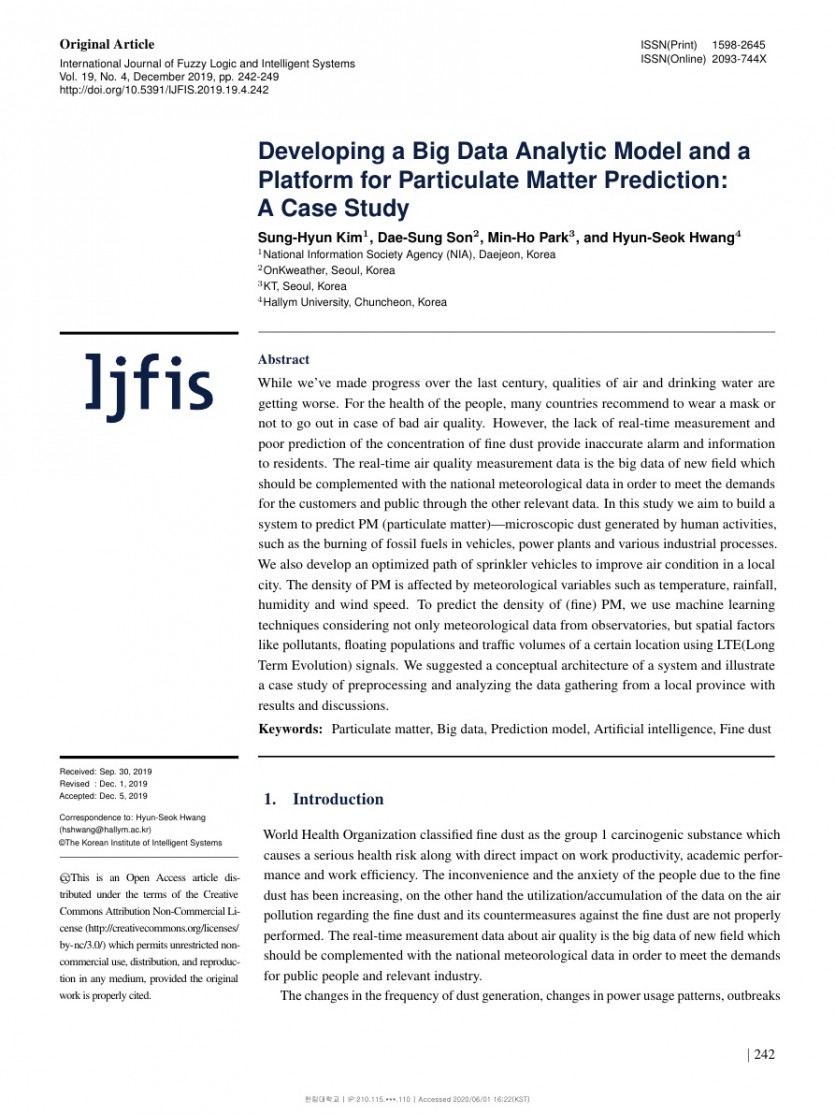Developing a Big Data Analytic Model and a Platform for Particulate Ma…
페이지 정보
- 최고관리자
- 23-05-31
- 2,414 views
- 2019
본문
While we’ve made progress over the last century, qualities of air and drinking water are getting worse. For the health of the people, many countries recommend to wear a mask or not to go out in case of bad air quality. However, the lack of real-time measurement and poor prediction of the concentration of fine dust provide inaccurate alarm and information to residents. The real-time air quality measurement data is the big data of new field which should be complemented with the national meteorological data in order to meet the demands for the customers and public through the other relevant data. In this study we aim to build a system to predict PM (particulate matter)—microscopic dust generated by human activities, such as the burning of fossil fuels in vehicles, power plants and various industrial processes. We also develop an optimized path of sprinkler vehicles to improve air condition in a local city. The density of PM is affected by meteorological variables such as temperature, rainfall, humidity and wind speed. To predict the density of (fine) PM, we use machine learning techniques considering not only meteorological data from observatories, but spatial factors like pollutants, floating populations and traffic volumes of a certain location using LTE(Long Term Evolution) signals. We suggested a conceptual architecture of a system and illustrate a case study of preprocessing and analyzing the data gathering from a local province with results and discussions.
Citation
Kim, S. H., Son, D. S., Park, M. H., & Hwang, H. S. (2019). Developing a Big Data Analytic Model and a Platform for Particulate Matter Prediction: A Case Study. International Journal of Fuzzy Logic and Intelligent Systems, 19(4), 242-249.
